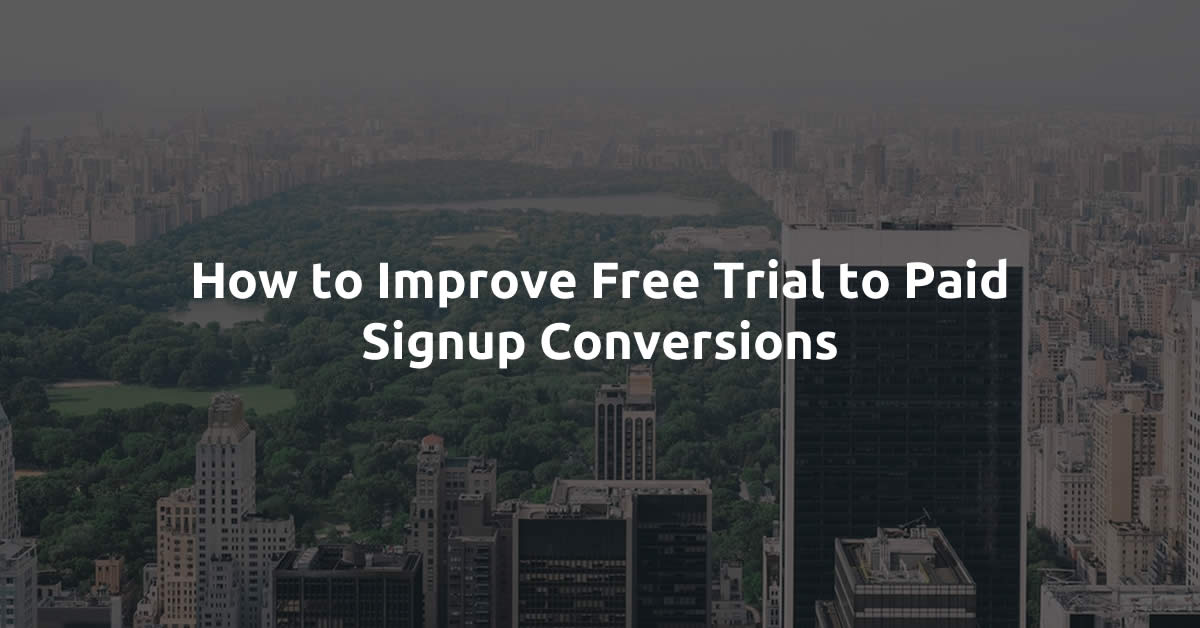Offering sales prospects free trials is often a very valuable marketing tool. It gives potential customers the opportunity to try your product, with their own data or experiment with how they would ultimately end up working with it.
Getting users to signup for a free trial is the easy part, making them actually use your product during the trial period is the really hard part. If the person in the free trial isn’t using your product during the trial period, there is no way that you can expect them to actually convert into a paid customer when the trial finishes.
The Initial Behavior During a Free Trial
The Journal of Marketing Research published a study that found that when a customer signs up for a free trial, that person begins using a product much differently than a customer who skipped the trial and paid for the product instantly. The study authors explained that a professional relationship that begins through a free trial, “influences usage and retention behavior, responsiveness to marketing activities, and ultimately how long the consumer will remain with the service.”
The study found that customers who began using a service during a free trial valued a service far less, which means they are typically customers for a shorter amount of time. Unsurprisingly though, the more that free trial users used the service (during their trial), the more likely they were to become paying customers.
This means that when you are crafting your marketing messages for free trial users, you need to think about the challenge you’re trying to overcome. You need to make people in free trials understand how to use a product, and you need to rapidly help them see why their is value in your product for them. You can do this by being intensely focused on explaining what the primary benefits of your product are and highlight the features that you know typically turn a new user into a long-term customer.
Communicate in a Personalized Way
If you communicate to a person who is trying your product in a personalized way during their trial, they are much likely to convert into a paid user. This means sounding authentic and genuine, sending your email from your personal work email (not a noreply@ email), and coming up with non-salesy ways to connect to your sales prospect.
When a person is in the free trial phase of adopting your product, do everything you can to do to let him or her know that you care about them and their experience with your product. If you have meaningful communication with the potential customer, you will leave a lasting impression that makes the person much more likely to convert into a paid user of your product.
Explore Your Data
If you aren’t collecting data, you aren’t going to be able to make smart data informed decisions. Collecting data is the only way you’ll have an opportunity to understand how your customers interact with your product (and what they may want to make your product more useful to them).
When you are exploring your data, you should be searching for the action(s) that instantly make a person more likely to convert to being a long-term user of your product. For example, if you’re a site like Tumblr, you may find that the instant somebody changes their site to a custom theme they become a long-term user.
You’ll find more long-term users when you explore your data because you’ll discover that magical item that helps you see what triggers a higher likeliness to convert from a free user to paid customer. You’ll see exactly what users find useful (or not useful) when you obsess over user behavior and data. You will discover that “low hanging fruit” feature, which means that you find the feature that makes people who are on the fence about converting start paying.
These are just some ideas on how to improve free trial to paid signup conversions. There’s no exact formula on how to improve your free trial conversion rates, but these tips will help you better understand your product and your prospect. When you better understand usage of your product, you can make the choices that help you improve conversions.
